Image: A weak start for investors.
Photographs: Illustration: Uttam Ghosh/Rediff.com Devangshu Datta
'One swallow doesn't make a summer' is a proverb that points out the dangers of extrapolating trends on small data samples. Going by that principle, one can scarcely extrapolate annual trends for 2011 from just over a week's worth of trading. However, 2011 has started weak. The Nifty has lost around 6 per cent, dropping about 400 points in the New Year.
Photographs: Illustration: Uttam Ghosh/Rediff.com Devangshu Datta
'One swallow doesn't make a summer' is a proverb that points out the dangers of extrapolating trends on small data samples. Going by that principle, one can scarcely extrapolate annual trends for 2011 from just over a week's worth of trading. However, 2011 has started weak. The Nifty has lost around 6 per cent, dropping about 400 points in the New Year.
If 2011 is going to be a bearish year, traders could seek alternative investment and trading options.
...
Bearish market: What investors must do
Image: Illustration: Uttam Ghosh/Rediff.comPhotographs: Ways to make money.
Assuming this is a genuine trend, the market would start looking attractive somewhere between the 5,000 and 5,500 mark. It may fall quite a bit lower 30 per cent corrections are normal in the Indian bear markets. However, a 15-20 per cent correction would leave sufficient margin of safety for a long-term investor, who was prepared to average down. Hedgers could start looking to buy puts in that range in say, the June 2011 series. Instead of just waiting for the market to fall (it may not, after all), there are other ways to try making money.
...
Bearish market: What investors must do
Image: Pressure on stock prices from FII selling.
For instance, selling Nifty futures in early January could have generated a big profit, given the 10:1 leverage. An even better trade was a long USDINR futures. The January 2011 contract dropped from Rs 44.94 /$ on December 31 to Rs 45.6 on January 10 before recovering to 45.48 on January 11. Since currency futures contracts offer 50:1 leverage, that translates into over 70 per cent gains.
The currency and stock market trends are connected. Much of the downwards pressure on stock prices comes from FII selling.
...
Bearish market: What investors must do
Image: Dollar notes.
FII actions do contribute to short-term rupee strength or weakness though of course, macro-economic factors (rising inflation, a widening trade gap) also have a say in currency moves.
A chartist sees a target of around Rs 46.20 inside the January settlement (January 27) since the USDINR pattern forecasts further rupee weakness.
A long USDINR position could therefore, still generate significant gains. A stop loss at around 45.35 would limit potential downside....
Bearish market: What investors must do
Image: Anxious investors.Photographs: Reuters.
Apart from a potential diversification into trading currencies, investors could consider long-term investments in the old warhorses of the IT and pharmaceutical sectors. If the rupee does weaken, it usually has a positive impact on these two sectors due to rising export competitiveness. Indeed, the IT sector has been the standout performer of the past two years.
...
Bearish market: What investors must do
Image: A man speaks on a his mobile as he looks at a large screen displaying India's benchmark share index.Photographs: Arko Datta/Reuters.
Another interesting area is commodities. Metals in particular could develop trends that have global significance and last a fair length of time. The global metals market is responding adversely to fears that China's efforts to control inflation would lead to lower off take in the PRC. Pretty much every non-ferrous metal (aluminium, copper, zinc) has been sold down.
...
Bearish market: What investors must do
Image: A stock broker.Photographs: Reuters.
The impact was visible on Indian commodity exchanges as well as in the stock prices of producers like Hindalco. If metals do underperform the overall market, it's an easy sector to short either as pure commodities or in the stock market.
The author is a technical and equity analyst.

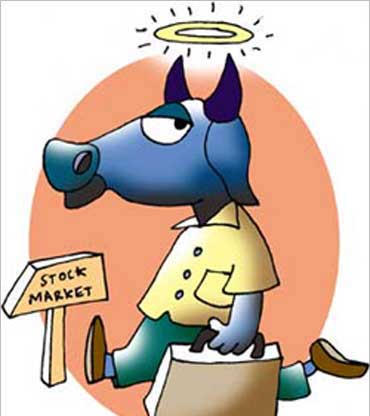
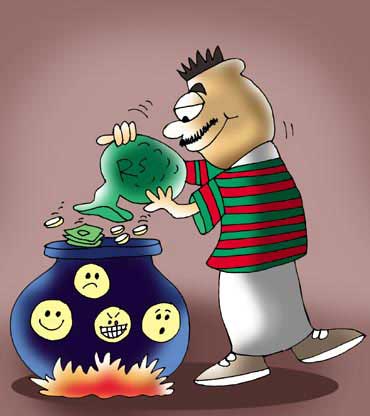
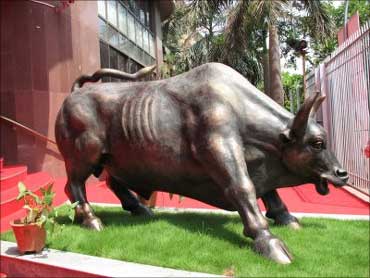
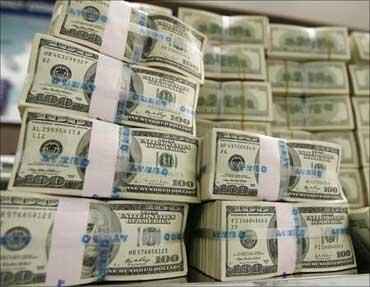
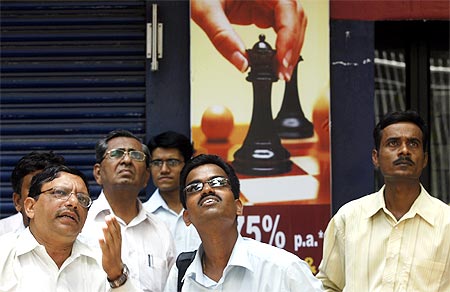

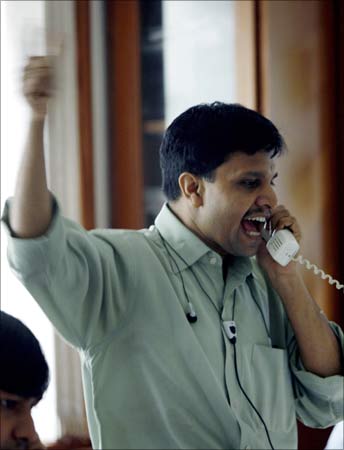

article